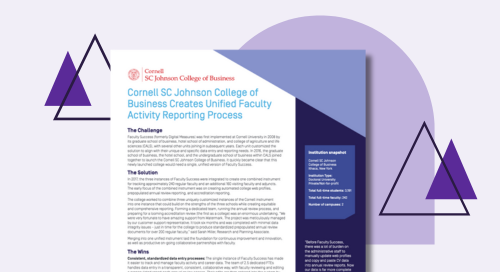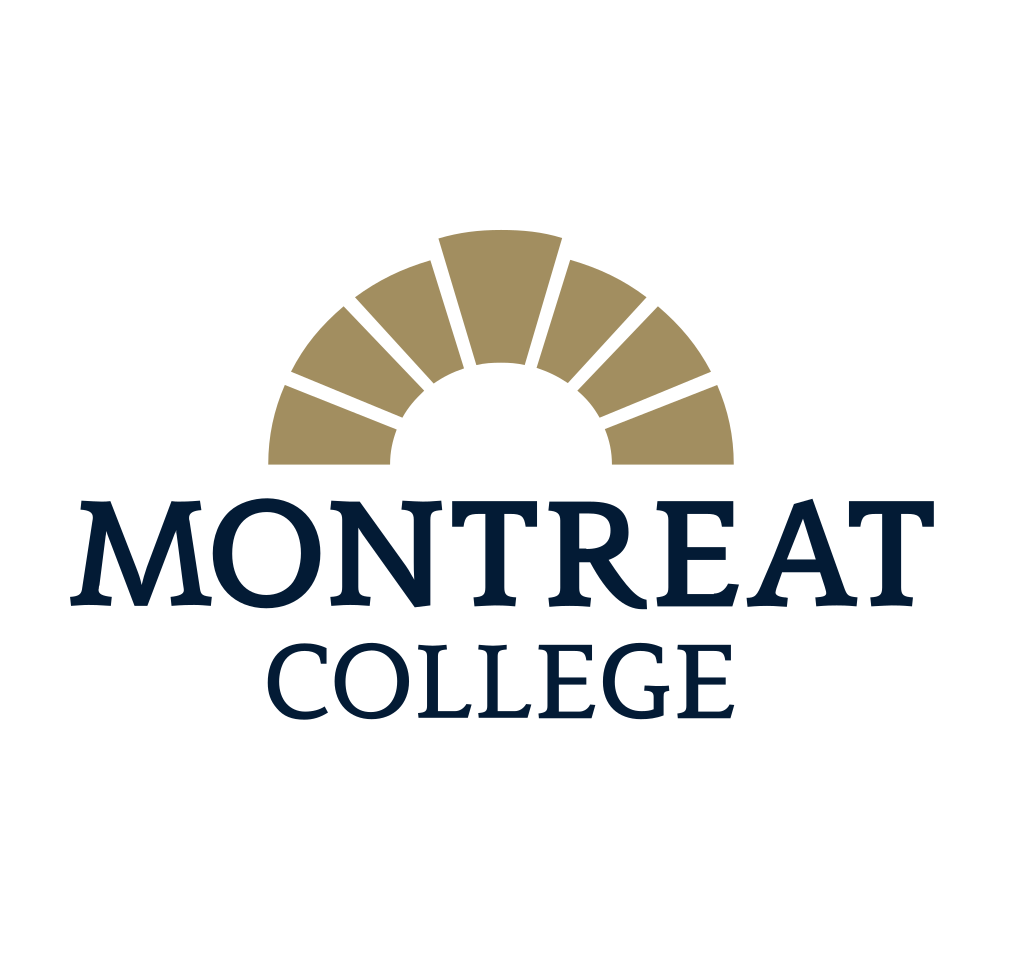Cornell SC Johnson College of Business Creates Unified Faculty Activity Reporting Process
At a glance
Cornell SC Johnson College of Business

“Before Faculty Success, there was a lot of burden on the administrative staff to manually update web profiles and copy and paste CV data into annual review reports. Now our data is far more complete and accurate and our ability to provide analysis and reporting is more efficient.”
Sarah Miller
Research and Planning Associate – Cornell SJ Johnson College of Business
Learn more about how Cornell SC Johnson College of Business creates unified faculty activity reporting process.
Download Now

Faculty Success (formerly Digital Measures) was first implemented at Cornell University in 2008 by its graduate school of business, hotel school of administration, and college of agriculture and life sciences (CALS), with several other units joining in subsequent years. Each unit customized the solution to align with their unique and specific data entry and reporting needs. In 2016, the graduate school of business, the hotel school, and the undergraduate school of business within CALS joined together to launch the Cornell SC Johnson College of Business. It quickly became clear that this newly launched college would need a single, unified version of Faculty Success.
In 2017, the three instances of Faculty Success were integrated to create one combined instrument for tracking approximately 240 regular faculty and an additional 160 visiting faculty and adjuncts. The early focus of the combined instrument was on creating automated college web profiles, prepopulated annual review reporting, and accreditation reporting.
The college worked to combine three uniquely customized instances of the Cornell instrument into one instance that could build on the strengths of the three schools while creating equitable and comprehensive reporting. Forming a dedicated team, running the annual review process, and preparing for a looming accreditation review (the first as a college) was an enormous undertaking. “We were very fortunate to have amazing support from Watermark. The project was meticulously managed by our customer support representative. It took six months and was completed with minimal data integrity issues – just in time for the college to produce standardized prepopulated annual review documents for over 200 regular faculty,” said Sarah Miller, Research and Planning Associate.
Merging into one unified instrument laid the foundation for continuous improvement and innovation, as well as productive on-going collaborative partnerships with faculty.
Consistent, Standardized Data Entry Processes:
The single instance of Faculty Success has made it easier to track and manage faculty activity and career data. The team of 2.5 dedicated FTEs handles data entry in a transparent, consistent, collaborative way, with faculty reviewing and editing a prepopulated report each annual review season. Their edits are then entered into the system by team staff. “We know exactly what’s in the system, and it’s very accurate because it’s all entered according to the same business rules,” says Dean Meloney, Team Lead and Interim Director of Academic Affairs.
Accurate, Repeatable Reporting:
By establishing thoughtful business rules that are applied consistently and creating well designed custom reports, administrative staff no longer feel like they’re always starting from scratch. “Ad hoc reporting and analysis could take days of gathering information, and then we would struggle to replicate it in a future year when it was asked for again,” says Miller.
Automated Web Profiles:
While all data entry is handled by the small, dedicated team, faculty have access to the Faculty Success interface, where they can update their biographies, select expertise keywords, and choose the publications, awards, and media items that are included in their web profile.
Increased Buy-In and Trust with Faculty:
Because of the accurate reporting details Faculty Success provides, faculty are more willing to participate in the process and can easily see their own career evolution as the reports improve. “We’re showing them that we’re working on their behalf, and they can see improvements every year as we refine what we’re doing and find better ways to represent them, and they appreciate that,” said Miller.

Browse our resource library
See how our tools are helping clients right now, get in-depth information on topics that matter, and stay up-to-date on trends in higher ed.







